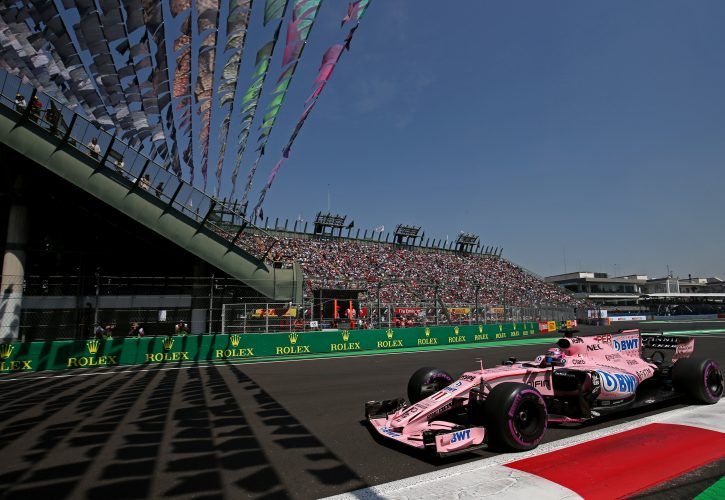Latest news and info on the 2019 Mexican Grand Prix in Mexico City, including race information and places to stay.

Key figures
|
|
2019 Mexican Grand Prix Session Reports:
No sessions run yet
2019 Mexican Grand Prix News:
2019 Mexican Grand Prix Guide + Info:
Returning to the F1 calendar in 2015, the Autodromo Hermanos Rodriguez has immediately delivered an iconic section for drivers and fans alike. The long pit straight sees very high top speeds due to the lack of drag at altitude, but that also makes the track challenging as drivers struggle for grip. Turn 1 is a big braking zone which offers overtaking opportunities, before the same can be said of Turn 4. In between are a number of low speed corners, but the track then sweeps through a section of Esses before the right-handed Turn 11 takes drivers into the spectacular stadium section. While the track itself here is slow and tight, the setting of 30,000 people surrounding the circuit in an old baseball stadium creates an incredible atmosphere, before the track disappears through the grandstands and rejoins the old circuit in the middle of the previously fearsome Peraltada corner which ends the lap.
DESTINATION GUIDE
While a busy and at times intimidating city, Mexico City has plenty of beautiful architecture and safe areas to enjoy as a visitor. Roma/Condesa and Polanco in the centre of the city are your most likely destinations where you’ll want to base yourself in order to explore the sights and sounds, with the historic centre your likely first destination.
The Centro Histórico is now pushing seven centuries as the city’s downtown neighbourhood. Start off in the the main plaza, known as the Zócalo—legend says it was here, in 1325, that the Aztecs spotted an augur that foretold the rise of a great city and civilization. Facing the Zócalo are three noteworthy sites: the Palacio Nacional, the seat of national government and now home to magnificent Diego Rivera murals; the Cathedral, a baroque fantasia and one of the largest churches in the world; and the the ruins of the Aztecs’ Templo Mayor, where yes, the human sacrifice used to go down. All three are worth a visit.
Take a stroll down pedestrian-only Madero Street for a roiling parade of families and street performers, framed by architecture from every historical era. At the end of Madero sits an exuberant wedding cake of a concert hall, the Palacio de Bellas Artes. Duck in for a glimpse of its imposing art-deco interior or visit its museums.
Marvellous historic architecture and leafy, walkable streets are the backdrop to the adjacent, close-in neighbourhoods known as Roma and Condesa. All but abandoned after a devastating 1985 earthquake, gentrification has sent in, most recently in the Roma area, and the neighbourhoods are now a true apex of urban living. Give yourself plenty of time for a full exploration of its kicky shopping and dining scene; the city’s hippest nightlife; plus great strolling, parks and plazas.
Originally a tree-lined, residential area first developed in the mid-twentieth century, the neighbourhood known as Polanco is now Mexico City’s answer to Beverly Hills, Fifth Avenue and the Via Veneto—all rolled into one—and home to some of the city’s best-off and most prominent residents. Recently jazzed up Avenida Presidente Masaryk is the area’s main drag, home to retail outposts representing every international label; some of the city’s finest restaurants lie along adjacent streets. Polanco is Mexico City sophistication at its five-star apex.
GETTING THERE
The Autodromo Hermanos Rodriguez is situated just a few miles from Mexico City International Airport, to the east of the city centre. Traffic means this journey can still take 45 minutes, while the drive from the central areas of the city can be more than an hour so leave yourself plenty of time to reach the circuit.
While there is a metro system in Mexico City - with the circuit served by the Ciudad Deportiva station on the number 9 line - Uber is the easiest and cheapest method of moving around the city, with visitors recommended to use organised hotel cars rather than street taxis.


